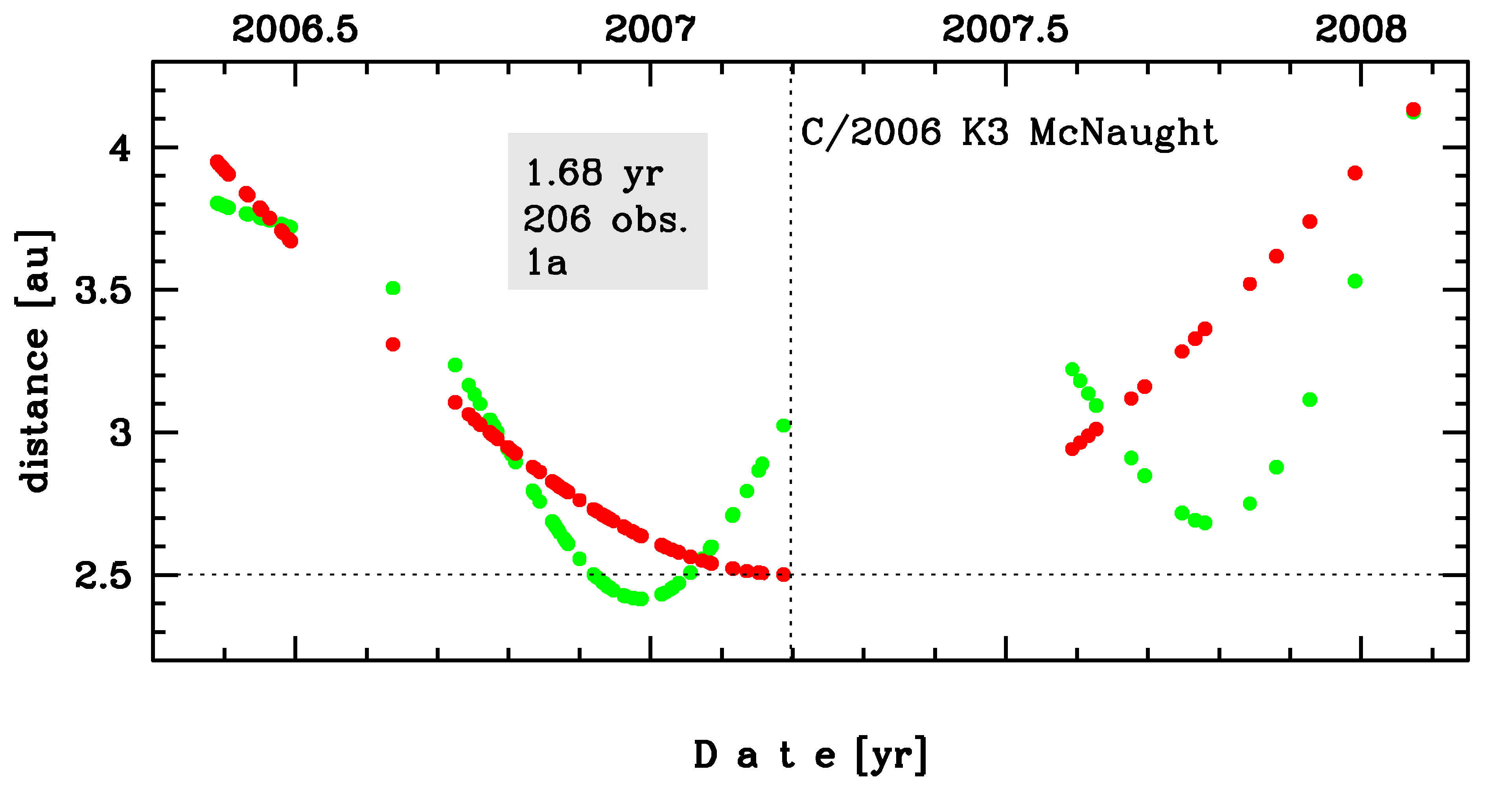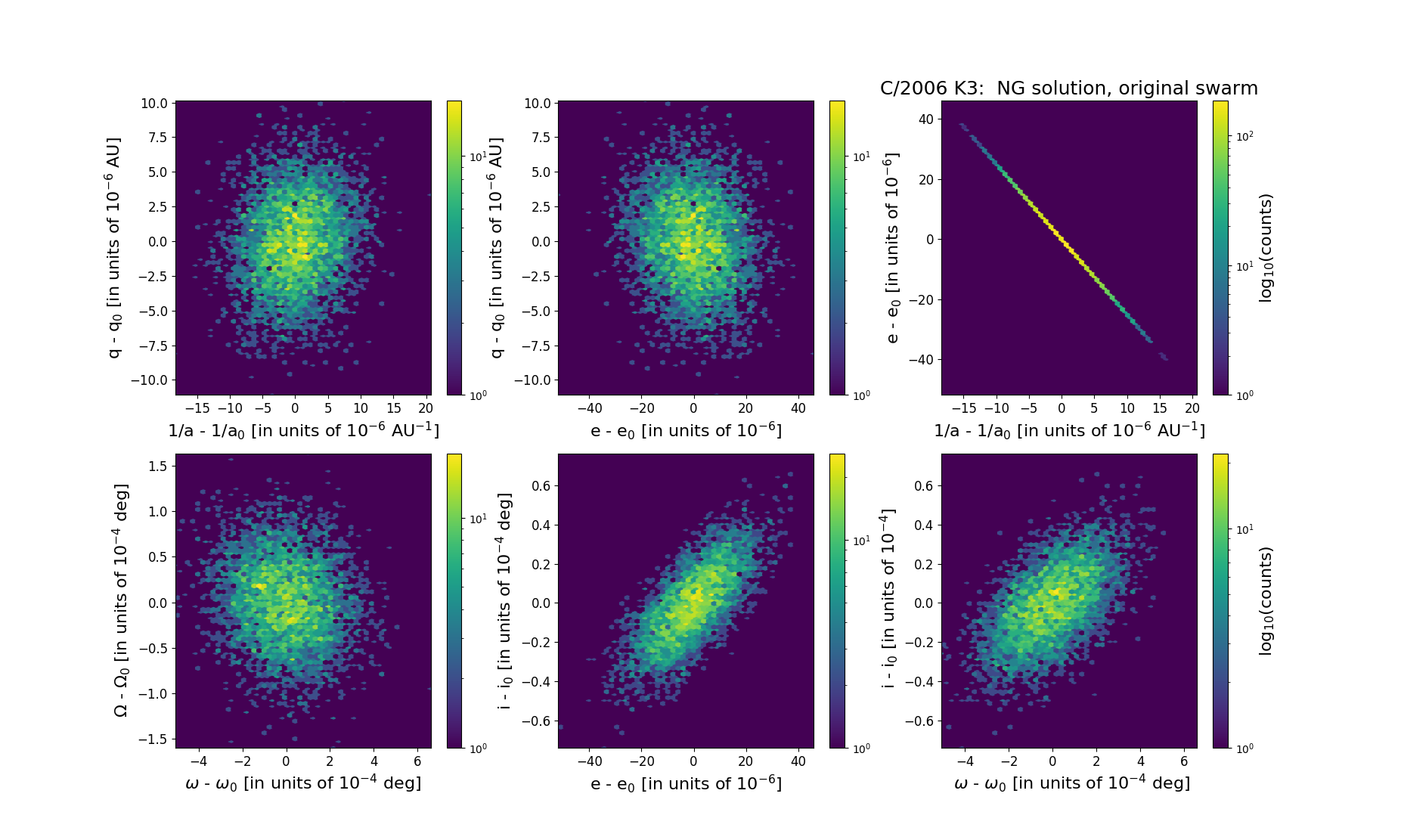C/2006 K3 McNaught
more info
Comet C/2006 K3 was discovered on 22 May 2006 by Robert H. McNaught (Siding Spring Survey), that is about almost 10 months before its perihelion passage. It was observed until 26 January 2008.
Comet had its closest approach to the Earth on 26 December 2006 (2.416 au), about 2.5 months before its perihelion passage.
Solutions given here are based on data spanning over 1.68 yr in a range of heliocentric distances: 3.95 au – 2.501 au (perihelion) – 4.13 au.
This Oort spike comet suffers small planetary perturbations during its passage through the planetary system; however, these perturbations lead to escape the comet from the planetary zone on a hyperbolic orbit (see future barycentric orbits).
See also Królikowska and Dybczyński 2013 and Królikowska 2020.
Comet had its closest approach to the Earth on 26 December 2006 (2.416 au), about 2.5 months before its perihelion passage.
Solutions given here are based on data spanning over 1.68 yr in a range of heliocentric distances: 3.95 au – 2.501 au (perihelion) – 4.13 au.
This Oort spike comet suffers small planetary perturbations during its passage through the planetary system; however, these perturbations lead to escape the comet from the planetary zone on a hyperbolic orbit (see future barycentric orbits).
See also Królikowska and Dybczyński 2013 and Królikowska 2020.
| solution description | ||
|---|---|---|
| number of observations | 206 | |
| data interval | 2006 05 22 – 2008 01 26 | |
| data type | significantly more measurements before perihelion (PRE+) | |
| data arc selection | entire data set (STD) | |
| range of heliocentric distances | 3.95 au – 2.50 au (perihelion) – 4.13 au | |
| type of model of motion | NS - non-gravitational orbits for standard g(r) | |
| data weighting | YES | |
| number of residuals | 402 | |
| RMS [arcseconds] | 0.54 | |
| orbit quality class | 1a | |
| orbital elements (barycentric ecliptic J2000) | ||
|---|---|---|
| Epoch | 1611 09 13 | |
| perihelion date | 2007 03 13.05203836 | ± 0.00027831 |
| perihelion distance [au] | 2.50325995 | ± 0.00000303 |
| eccentricity | 0.99984724 | ± 0.00001158 |
| argument of perihelion [°] | 328.074663 | ± 0.000153 |
| ascending node [°] | 49.427949 | ± 0.000043 |
| inclination [°] | 92.612447 | ± 0.000018 |
| reciprocal semi-major axis [10-6 au-1] | 61.02 | ± 4.63 |
| file containing 5001 VCs swarm |
|---|
| 2006k3n5.bmi |

